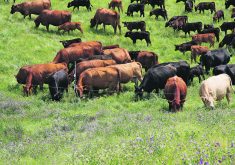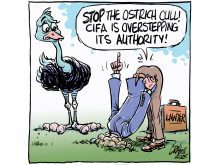SUPER RICH CLUB
Some of the most powerful super rich of the world have a cozy little club called Bilderberg.
They represent the major multinational corporations and hold secret meetings with around 130 participants attending, one-third from the Americas and two-thirds from Europe.
About two-thirds come from the corporate sector. The other third is comprised of invited guests who are either influential government members or who can provide information critical to the Bilderberg agenda.
At their annual conferences, no resolutions are voted on or policy statements issued. Decisions are agreed on by consensus. Once a decision is made, however, they control the resources to carry it out and generally do. They are in a position to influence most of the capitalist world. Their only obstacles to controlling the entire world are competing forces both outside and inside the capitalist class.
Read Also

Budget seen as fairly solid, but worrying cracks appear
The reaction from the agriculture industry to prime minister Mark Carney’s first budget handed down November 4th has been largely positive.
I suspect much of their strategy revolves around eliminating this competition. If they succeed they will have free rein to run roughshod over any democratic institutions that remain. That would ensure that their wealth and power are absolute.
Although their conferences are secret, they now issue a press release listing the names of participants, www.bilderbergmeetings.org/participants2012.html.
I found it interesting that the list for their May 31 to June 3, 2012, meeting at Chantilly, Virginia, U.S.A., includes the name of Alberta’s newly elected premier, Allison Redford.
William Dascavich,
Edmonton, Alta.
CWB WILL SURVIVE?
While most people in the grain industry were acknowledging the CWB will not survive without the single desk, media magnet Cherilyn Nagel, a former Western Canadian Wheat Growers president, stated: “The CWB can operate effectively in a market-choice environment with the right people and the right attitude.”
Well, since (agriculture) minister (Gerry) Ritz hand picks the entire board of directors at the CWB now, they must have the right people and attitude as the minister spent all of 30 minutes at the wheat board learning about the grain industry workings.
Couple that with Nagel’s pricing prowess of locking in $7 durum in December when it is now reaching record highs, and with her support of the large farm operation of Wigmore
Farms which is now out of operation, I’m sure her prediction that the CWB will survive is almost etched in stone?
Eric Sagan,
Melville, Sask.
FLOOD FEEDBACK
When it comes to water, Manitoba has always been subject to a boom or bust cycle.
Substantial effort and investments have gone into ensuring the impacts of high water on the Red River can be managed, even in severe years.
The same level of focus is needed to ensure other areas of the province can also better manage the extremely wet years.
Manitoba’s Progressive Conservatives repeatedly called for an independent review of the handling of the 2011 flood, the costly effects of which are still being felt.
Two groups have been struck to look at issues like the accuracy of flood forecasting, preparedness and mitigation, environmental impacts and the future level of Lake Manitoba, to name a few.
One group is the 2011 Manitoba Flood Review Task Force. See www.2011manitobafloodreviewtaskforce.ca.
The other is the Lake Manitoba/Lake St. Martin Regulation Review Committee. See www.lakemanitobalakestmartinregulationreview.ca.
Both groups are seeking public input via open houses, written submissions and online surveys.
Presentations about flooding and land use policies and zoning, from government departments and stakeholder groups, are available on these websites to help inform the discussions.
Open houses are set as follows: St. Laurent on Sept. 11; Portage la Prairie on Sep. 18; Langruth on Sept. 19 and Winnipeg on Sept. 26.
It is vitally important you participate in these reviews. This flood supplied some tough lessons.
We must learn from the 2011 experience and be more proactive in our ability to manage and store water now and in the future.
Ian Wishart,
PC MLA Portage la Prairie,
PC water stewardship critic,
WARNING SIGNS
Something most foul is afoot in our environment. Through this spring and on into early July, the air around my yard and fields were alive with the hum of the wings of all manner of insects.
Bees, wasps, hornets, mosquitoes, dragonflies were all very abundant.
By the weekend of July 21, all wasps and hornets were gone. Abandoned nests exist.
Bees, dragonflies and mosquitoes are present, although in severely reduced numbers. Why?
Are we perhaps inundating our air with far too many fungicides and pesticides such that the very combinations are far too powerful?
When the small participants in our world begin disappearing, what follows? Birds, animals and, of course, us. These little guys are warning bells. We better answer the call.
Find the cause and remedy, or the scales will tip too far. They are environmentally important.
Delwyn Jansen,
LeRoy, Sask.














